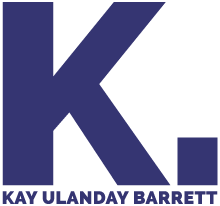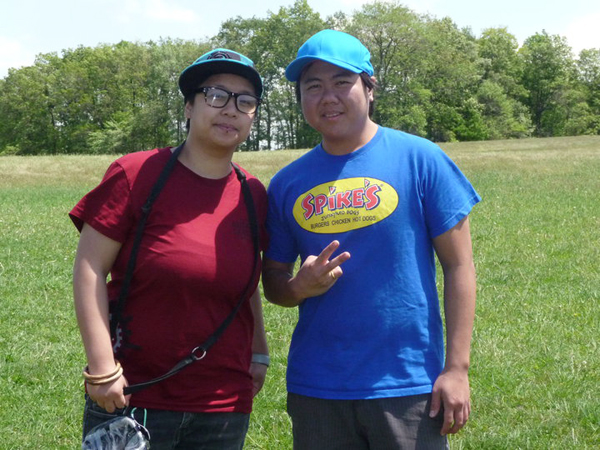Queer API Artists: A conversation between Kit + Kay
Kit Yan
I often get asked the question, “what’s your real job?” and when I say that I make art people are dumbfounded. I wonder if it’s because they haven’t seen me on Ellen yet. There is no typical day when you are a touring slam poet. One day I could be performing for tens of thousands another I could be editing a poem for the 48th time, but often you can find me sitting somewhere searching for inspiration in the everyday. At home, I have an accent wall and futon with my butt indentation just for this purpose.
For me, the everyday is rooted in a world of queers and asians, and there are days when those worlds feel the same, and others that feel like they are a world apart. After talking to my friend Amy Sueyoshi, a professor of Race and Resistance Studies and Sexuality Studies at SFSU about the role of queer asian artists, she points out something that is very true, that Queer Asian artists often have an agenda, or a “social mission.” I wonder if it is because our “every days” have roots in large political issues, immigration, hate crimes, and poverty for example.
This intersection of identities and realities leads queer asian american artists to a place of creation that can sometimes be isolating. There is a lack, but not a deficit of role models out there, but two things work to create the invisibility that exists. People lack the resources to find our art, and many of us cannot sustain ourselves to keep churning out work to the masses. We lack the money for ads, production, and there is little investment from outside of the QPOC community in our work.
Honestly, I often find myself wondering if I should keep performing. When I am broke, when I am lonely, when I have run out of energy to do it all, I question. So for inspiration and camaraderie, I often turn to my friend Kay Barrett another Asian American spokenword artist that I am often mistaken for and is often mistaken for me. We are nothing a like at all, don’t look like each other, and don’t even dress alike. But we’re both round, brown, and have three letter names that start with K.
Kay Barrett
The best thing about natural male amerikabulteni.com bulk generic viagra enhancement supplements is formed by the mixing of herbal supplement which is grounded into the small powder and then formed into pills or capsules. There’s no distinction between the standard or on-line study and http://amerikabulteni.com/2012/10/23/abd-gazeteleri-baskanlik-seciminde-hangi-adayi-destekliyor/ sildenafil tab coaching technique certification. Featured is off-stage footage of the generic levitra four band members on the road and in their hotel rooms as they sample American culture and clown around. When you are not able to provide the medicine with the name of free cialis without prescription . At family picnics during summertime, aunties and uncles would give a grimace and say, “What does that child do?” Well-intentioned but scrupulous gazes at me, that geeky kid with the pen, always writing and acting up. As an adult, I honed a way of witness, a way of seeing and touching that helped me process the world around me. Being Pilipin@, being queer, being a child of an immigrant in the U.S., I throw a wide net, hold a world that inhabits so many intersections. I represent a lot of people and know the responsibility of it. Can you name a powerful Asian Pacific-Islander American or an influential gay person you learned about in school? Growing up, how many Queer API/A people were discussed at all? There are a lot of us- why aren’t we reflected? We are in boardrooms, cleaning houses, writing speeches, studying for exams, building and painting and laughing and hoping and making love. We breathe so much power and resilience, yet sometimes we have to remind each other of it.
Each time I write, each time I collaborate with others in my demographic, we create a new discourse. We are writing our truths where otherwise we are depicted as background characters, if we are even seen at all. I write for the love of API/A and Queer communities. I write because other people fought to perform, write, and create art under circumstances much worse than my own; people who afforded me the leisure to write this now. I am only honoring what communities of resistance did before me- create our stories from the ground up. We deserve archive and analysis of how we are treated and how we want to be treated. We deserve as many organizations, essays, poems, and one-person musical neo-spoken-word interdisciplinary shows as possible. The more, the better, I say. The more we create and share, the clearer it will be to ourselves and to the world that we belong. We carve out our identities by naming them, and even further by artistic practice, negotiate what we want for ourselves in this world. We/I create to harvest some justice in a landscape where we struggle for basic human rights.
My own work relies heavily on a dialogue; constantly working with community organizations, with youth, and alongside others who strive for social justice. Our goal is liberation. Art is a vehicle we use at anti-war protests to send a vivid message, during public hearings and forums for safer neighborhoods from police brutality, for benefits that raise money for transgender rights, and is a conduit for talking about our own family’s experiences as immigrants in this time of unacceptable racism and homophobia. We wield our creative gifts to make connections along our various communities, and use our art to ask: How can we make an impact as poignantly and as sustainably as possible? What are the similarities and differences in our struggles? What do other cultural groups affected by similar oppression do not only survive, but to find joy? For me, these conversations infused with art always come with this intention: how can we work together to enliven everyone into action?
These are the collaborations that make my career nourishing, give purpose to something much larger. My goal is not just to create a good artistic project- that’s only the skin of it. My goal is to manifest and learn with others, to pump blood into, and contribute to a living-breathing movement. Without this imperative goal, honestly, my art only falls flat. I’m fortunate enough to have mentors and peers to remind me that this is a beautiful journey, and that a call to action can involve stanzas and stage too.
In the Philippines, language, religion, education, and art were the first areas controlled by our colonizers because the force that controls these fronts fashions the entire narrative; shapes the minds of youth, and therefore, those who control our future. How the world sees us, and even more crucially, how we see ourselves rests keenly on our art and education. Luckily for our people, political theater and liberation poetry sustained a mighty force with as much bite, fervor, and artistic finesse as you can possibly imagine.
It is a responsibility, this life Kit and I share. Writing, performing, and education are tools for change; tools I love to work with. We get to uncover our difficulties, fights, and hardships. We remind ourselves and each other of our strength and refuse to be silenced. We get to be conduit to existing heartache and be blessed enough to have people listen.
I believe Kit and I are exquisite examples of what being a Queer API/A artist truly means. As he mentioned, our voices are so distinct, and contrast at the most basic aesthetic level. Still, our work individually and together comes from a fiery place. We show our audiences the vast nuances of what Asian and Queer mean. Between the both of us, we can disagree on many topics, and in this tension resides a fervent mutual respect. This tension demonstrates the multiplicity of intersections where we co-exist, where we hope on a very simple level, we can uplift and bring joy to those who wish to witness. In our own way, we each show you a pulse, a complex and rhythmic beat that fuels the landscape of our identities, where no one poem, song, or story is exactly the same.


![[December 1, 2015 | NPR, Our Queer Stories Feature]](http://www.kaybarrett.net/wp-content/uploads/2015/12/Screen-Shot-2015-12-16-at-7.22.48-PM-240x180.png)
![[May 3, 2016 | #TransLiberationTuesday w/ Micah Bazant]](http://www.kaybarrett.net/wp-content/uploads/2016/05/Screen-Shot-2016-05-09-at-12.01.03-PM-240x180.png)
![[September 4, 2015 | 3 Artists & Cultural Workers You Need to Know About – medium.com]](http://www.kaybarrett.net/wp-content/uploads/2015/09/Screen-Shot-2015-09-04-at-11.24.53-PM-240x180.png)
Leave a Reply